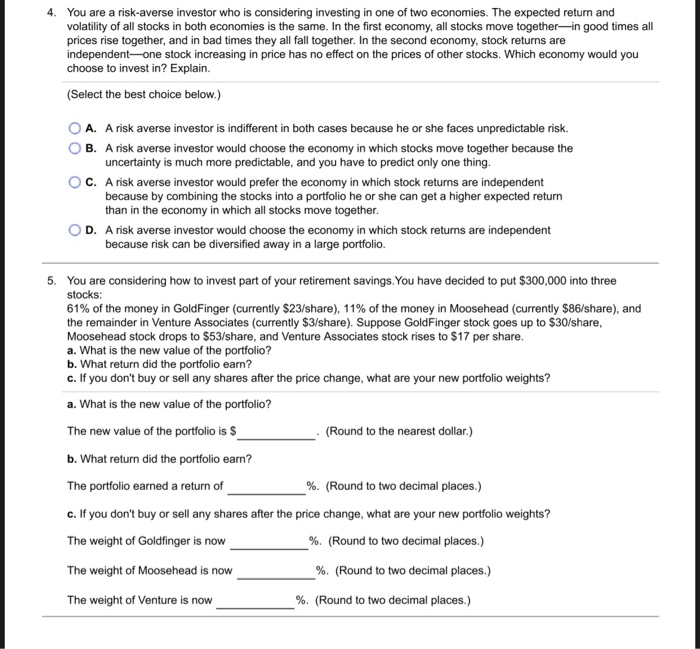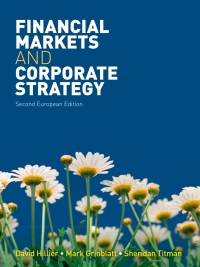4. You are a risk-averse investor who is considering investing in one of two economies. The expected return and volatility of all stocks in both economies is the same. In the first economy, all stocks move together-in good times all prices rise together, and in bad times they all fall together. In the second economy, stock returns are independent one stock increasing in price has no effect on the prices of other stocks. Which economy would you choose to invest in? Explain. (Select the best choice below.) O A. A risk averse investor is indifferent in both cases because he or she faces unpredictable risk OB. A risk averse investor would choose the economy in which stocks move together because the uncertainty is much more predictable, and you have to predict only one thing. OC. A risk averse investor would prefer the economy in which stock returns are independent because by combining the stocks into a portfolio he or she can get a higher expected return than in the economy in which all stocks move together. OD. A risk averse investor would choose the economy in which stock returns are independent because risk can be diversified away in a large portfolio. 5. You are considering how to invest part of your retirement savings. You have decided to put $300,000 into three stocks: 61% of the money in GoldFinger (currently $23/share), 11% of the money in Moosehead (currently $86/share), and the remainder in Venture Associates (currently $3/share). Suppose GoldFinger stock goes up to $30/share, Moosehead stock drops to $53/share, and Venture Associates stock rises to $17 per share. a. What is the new value of the portfolio? b. What return did the portfolio earn? c. If you don't buy or sell any shares after the price change, what are your new portfolio weights? a. What is the new value of the portfolio? The new value of the portfolio is $ . (Round to the nearest dollar.) b. What return did the portfolio earn? The portfolio earned a return of %. (Round to two decimal places.) c. If you don't buy or sell any shares after the price change, what are your new portfolio weights? The weight of Goldfinger is now %. (Round to two decimal places.) The weight of Moosehead is now %. (Round to two decimal places.) The weight of Venture is now %. (Round to two decimal places.)







